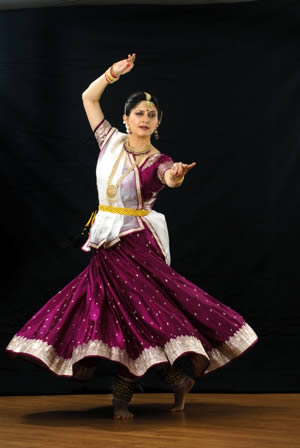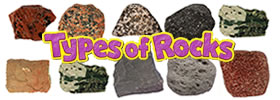Difference between Kathak and Kathakali Dance
Key Difference: Kathak and Kathakali are two different dances that originate in India. Kathak developed in North India, while Kathakali developed in the South. Both focus on telling stories, but they differ in the types of music they dance to and their respective costumes.
 Kathak and Kathakali are two different dances that originate in India. They are part of the ten Indian Classical Dances are quite revered in the country. Due to the fact that they sound similar, many might be misled to believe that they are, but they are not similar at all. Despite of the fact that their names are derived from the same root work, i.e. katha, which is Sanskrit for “story, conversation, traditional tale,” they actually developed at two distinct dance forms.
Kathak and Kathakali are two different dances that originate in India. They are part of the ten Indian Classical Dances are quite revered in the country. Due to the fact that they sound similar, many might be misled to believe that they are, but they are not similar at all. Despite of the fact that their names are derived from the same root work, i.e. katha, which is Sanskrit for “story, conversation, traditional tale,” they actually developed at two distinct dance forms.
Kathak developed in North India, while Kathakali developed in the South. Kathakali is considered to be native to Kerala, whereas Kathak is believed to originate in Varanasi, though it eventually spread northward and then deviated into three distinct forms: Jaipur, Benares and Lucknow. Kathakali eventually differentiated into Sampradayam, Kidangoor, Kalluvayi styles.
Both of them developed from the original source, which is the Natya Shastra compilation by ancient scholar Bharata Muni, and dating to between 200 BCE and 200 CE. However, while Kathak focuses on footwork, Kathakali instead focuses more on hand mudras and facial expressions. Both use these to tell stories, which is the primarily function of these dance styles.
While both originally focused on telling stories based on religious themes and spiritual ideas from Hindu epics and the Puranas, they eventually transitioned to tell stories that were more entertaining. Kathak, which was founded by the travelling bards of the north, eventually found a place in the royal courts being performed for kings and their audiences. Kathakali, on the other hand, developed on the theater stage. These have affected their individual styles. Kathak develop as a form of refined entertainment, whereas Kathakali developed with the primary focus of telling the elaborate stories of Mahabharata and Ramayana. Over time Kathakali started to adapt other plays, including recently adapting Western stories and plays such as those by Shakespeare and from Christianity.
 They also differ in the types of music they dance to and their respective costumes. While they both include classical Indian music played primarily on drums and accompanied by other instruments, Kathakali focuses more on operatic music which is better suited to tell a story. In Kathakali, the music is often accompanied by a vocalist that tells the play to the audiences. They often modify their voices for different part of the play as required. In Kathak, there is typically no singer accompanying the dance, though there is nothing against it.
They also differ in the types of music they dance to and their respective costumes. While they both include classical Indian music played primarily on drums and accompanied by other instruments, Kathakali focuses more on operatic music which is better suited to tell a story. In Kathakali, the music is often accompanied by a vocalist that tells the play to the audiences. They often modify their voices for different part of the play as required. In Kathak, there is typically no singer accompanying the dance, though there is nothing against it.
In Kathak, the dancer is often dressed modestly as compared to Kathakali, which is renowned for its fancy and detailed costume which is paired with large head dresses and heavy traditional jewelry. In Kathak, the dancer wears leggings and skirt or a sari paired with light jewelry. Though in both dancers were gungaroos on their feet.
Kathakali is also known for the intricately detailed makeup of the dancers. This makeup actually has a code, which the layman may not know about. Kings and heroes wear green face makeup, villains wear green makeup with red marks on the face, extremely angry or excessively evil characters wear red make-up and a flowing red beard, hunters and other forest people wear black makeup, while women and ascetics have yellowish faces.
In Kathak, the focus of the dance is on the footwork, in which the dancer starts slow and transitions up to a much faster tempo. In Kathakali, the story of the play and the characters is told through hand mudras and facial expressions to show what the characters are feeling. Kathakali dancers also tend to make use of the whole stage by moving and jumping around as required by the story, whereas in Kathak, the dancer mostly stays mainly in center of the stage.
Kathak is can be performed individually or as part of a group, by both men and women. Kathakali however is primarily performed as part of a group that has traditionally been all male. These male dancer-actors would take on both traditionally male and female roles; though nowadays several women have broken into the field and have performed as part of these groups. There is even a well to do all-female Kathakali dance troupe that has toured internationally.
Comparison between Kathak and Kathakali Dance:
|
|
Kathak |
Kathakali |
|
Existed since |
Can be traced back to 2nd century BC but has changed over the years. |
Modern Kathakali originated around the 17th century but existed in other forms dating back to 1st millennium CE. |
|
Etymology |
From Sanskrit katha meaning “story, conversation, traditional tale”. |
From Sanskrit katha meaning “story, conversation, traditional tale”. |
|
Transcribed in |
Written in Natya Shastra compilation by ancient scholar Bharata Muni, dated to between 200 BCE and 200 CE |
Written in Natya Shastra compilation by ancient scholar Bharata Muni, dated to between 200 BCE and 200 CE |
|
Passed down as |
An oral tradition, learnt and innovated from one generation to another verbally and through practice |
Gurukul system of transmission from one generation to the next, i.e. a teacher teaching a group of students. |
|
Region |
North India |
South India |
|
Developed in |
Varanasi and passed north |
Kerala |
|
Originally Performed in |
Courts and for public viewing |
Courts and theatres of Hindu principalities |
|
Function |
Storytelling – Performance Dance |
Storytelling – Performance Dance |
|
Dancers |
Can be performed by a single dancer or as part of a group |
Typically and traditionally performed as a group where each dance takes on different parts. |
|
Schools |
3 Gharanas: Jaipur, Benares and Lucknow |
Sampradayam, Kidangoor, Kalluvayi |
|
Focuses on |
Dancing and acting. Pure movement. Lucknow style emphasizes acting, while Jaipur style emphasizes the dance and footwork. |
Dancing and acting. Also incorporates movements from the ancient martial arts and athletic traditions of south India. |
|
Expresses |
Tells a story, originally stories about the gods, then eventually purely entertaining stories Jaipur gharana focuses on religious themes and spiritual ideas based in Vaishnavism and Shaivism. |
Folk mythologies, religious legends and spiritual ideas from the Hindu epics and the Puranas |
|
Performed by |
Both men and women |
Traditionally Male, though more women are now breaking in |
|
Form |
A standing form with legs and torso typically straight |
Standing form with various jumps and leaps |
|
Emphasis on |
Footwork |
Hand Mudras, as well as footwork and facial expressions. |
|
Expressions |
Kathak expressions are more introverted and withdrawn. The focus is more on footwork rather than facial expressions. |
Nine facial expressions called Navarasas: Sringara expresses Rati (love, pleasure, delight), Hasya expresses Hasa (comic, laugh, mocking), Karuna expresses Shoka (pathetic, sad), Raudra expresses Krodha (anger, fury), Vira expresses Utsaha (vigor, enthusiasm, heroic), Bhayanaka expresses Bhaya (fear, concern, worry), Bibhatsa expresses Jugupsa (disgust, repulsive), Adbhuta expresses Vismaya (wondrous, marvel, curious) and Shanta expresses Sama (peace, tranquility). |
|
Noted Style |
Rhythmic foot movements, adorned with small bells (Ghungroo), and the movement harmonized to the music and incorporating gestures of arms and upper body movement, facial expressions, stage movements, bends and turns. |
An operatic performance where dancers portray a character. The dance itself include stylizes movements with a lot of jumps and leaps incorporating gestures of arms and upper body movement. A lot of the focus is on the eye and face expressions. |
|
Consists of |
Various hand and foot movements, with the focus on the footwork. |
24 main hand mudras, and various minor ones. |
|
Costume |
Hindu Variation: Sari or skirt, with blouse called choli, and orhni (Scarf) Muslim Variation: skirt with close fitting churidar pyjamas and sometimes a long coat covering hands and the upper body, with a head cover scarf |
Heavy elaborate costumes consisting of large long skirts paired with full sleeved jackets and scarfs. |
|
Ornaments |
Anklets adorned with small bells (ghungroo) and light jewelry |
Elaborately colorful make-up, costumes and face masks, as well as large head dresses and ghungroo with full traditional heavy jewellery. |
|
Makeup |
Light Casual Makeup. Commonly includes heavy eyeliner |
Full Face Costume Make-up. Kings and heroes wear green face makeup, villains wear green makeup with red marks on the face, extremely angry or excessively evil characters wear red make-up and a flowing red beard, hunters and other forest people wear black makeup, while women and ascetics have yellowish faces. |
|
Music |
Can vary depending on the preference of the performer, but usually includes transitions from slow to fast on the tablas. |
Incorporates a story told as a poem with the music. Orchestral music. |
|
Instruments |
Two to twelve classical Indian instruments or more in each performance, including tabla, sarangi or harmonium with manjira. |
Chenda, Maddalam, Cymbals and Ela taalam. |
|
Vocal |
May or may not be accompanied by a singer. Typically is not. |
Vocalists sing the entire play which is in the form of metered and lyrical verses. The voices are varied to help set the context and express the inner state of the character. |
|
Sections |
Three main sections - the invocation (of God or Guru), one pure (abstract) dance recital called nritta and one expressive dance called nritya which is slower and more expressive in nature. |
Traditional plays were divided into two interconnected parts, the third-person Shlokas and first-person Padams. A Padam consists of three parts: a Pallavi (refrain), Anupallavi (subrefrain) and Caranam (foot). |
|
Duration |
Each dance may last few minutes. The set might last a couple of hours with each dancer, or troupe performing in sets. |
A traditional performance is long, starting at dusk and continuing through dawn. It may even be told over various days, each day picking up the story again at dusk. |
Reference: Wikipedia (Kathak and Kathakali), Cultural India (Kathak and Kathakali), Kerela Tourism, Georg Andreas Suhr Image Courtesy: allwomenstalk.com, keralataxis.com









Add new comment